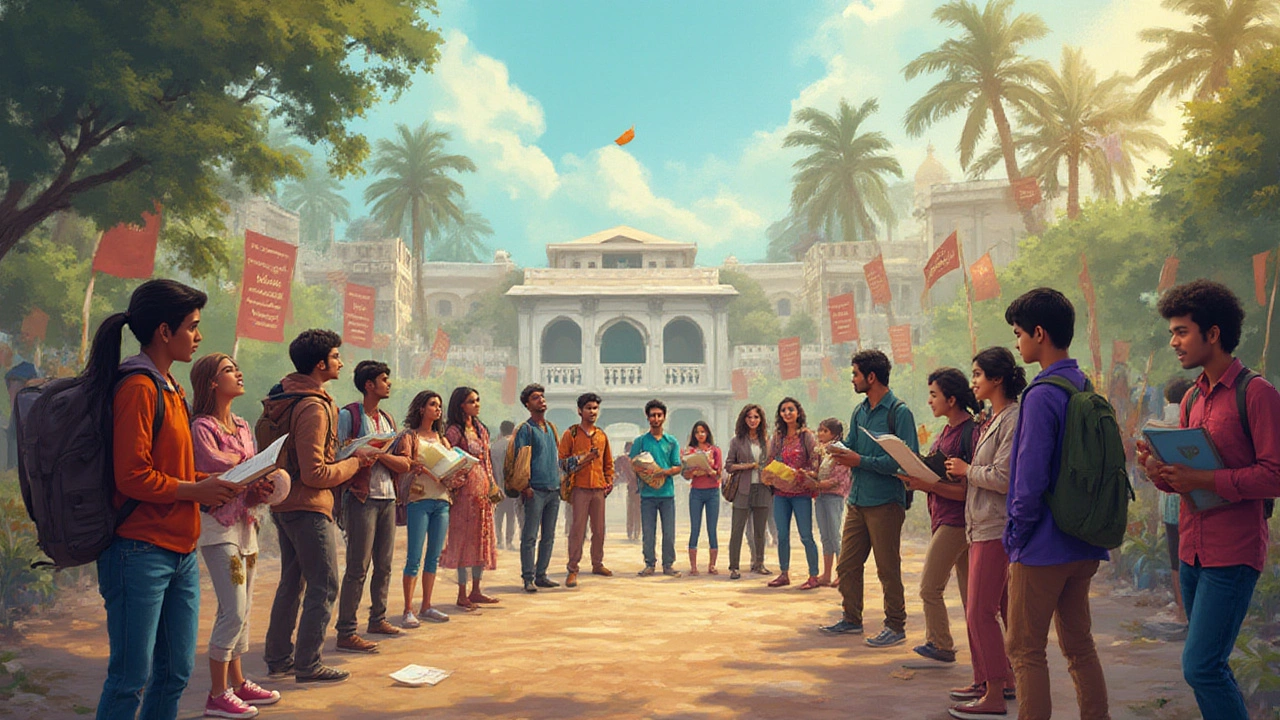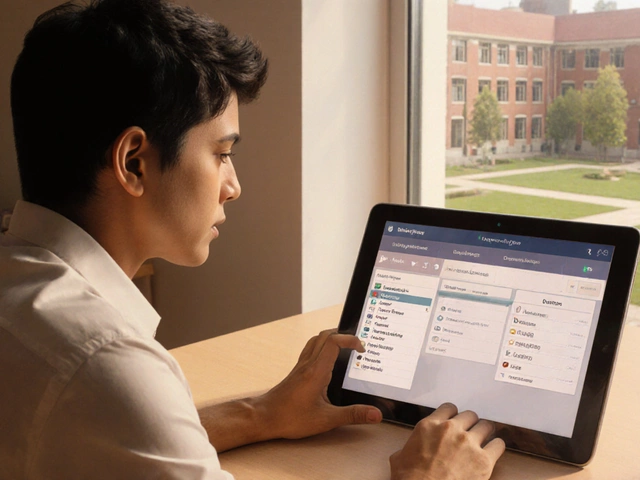
Sticker shock hits a lot of students when they look up the cost of a regular undergraduate degree in India. But there’s another way that doesn’t break the bank—one that gets you into the workforce faster, or even helps you leapfrog into advanced college courses. It’s called the Higher Diploma. Never heard of it? You’re not alone. It hides in plain sight, sometimes under different names, but for thousands each year, it’s a step that can seriously change the trajectory of their life and career. It’s time to peel back the curtain and really get what a higher diploma is, why it matters, and how it can fast-track your ambitions in ways you probably haven’t thought about.
What Exactly Is a Higher Diploma in India?
High school’s done. Maybe you don’t want four years locked away in college, or you’re itching to get hands-on with skills that land jobs, not just theory. This is where the Higher Diploma in India comes in. Think of it as a level above the regular diploma, but not quite a full bachelor’s degree. Usually, a higher diploma is awarded after a year or two of focused study beyond a basic diploma. It’s available everywhere from AICTE-recognized polytechnics, state technical boards, to private and even some foreign universities with Indian campuses.
But there’s a twist: unlike “diploma” (which often means something you take right after 10th or 12th grade), “higher diploma” usually means a next step or a specialization. In technical fields, it might mean deep-diving into something like civil engineering, hotel management, digital marketing, or even animation. In practical terms, think of it as a booster rocket—it adds tech skills, management chops, or niche expertise that employers value. Some higher diplomas are designed for professionals, so you’ll find courses offered post-graduation, too. Not every country uses the same term, so if you see “Advanced Diploma” instead, it’s often used interchangeably—with a similar goal.
There’s no one-size-fits-all definition since India lacks a single regulator for all higher diploma programs. Some are linked to UGC guidelines, others to vocational boards like NSDC. Most, though, will fall into a few big buckets:
- Engineering/Polytechnic Higher Diplomas (electronics, civil, computers, mechanical, automobile, etc.)
- Paramedical fields (radiology, lab tech, physiotherapy assistant, etc.)
- Business, hospitality, tourism management
- Web development, UI/UX, animation, filmmaking, or IT
A lot of people mix up postgraduate diplomas with higher diplomas—don’t. Postgraduate diplomas need you to finish a degree first, while higher diplomas can sometimes be started after 12th, but more often, after you finish a foundational diploma (like in engineering). If you hunt around websites like India’s National Skill Development Corporation (NSDC) or the State Board of Technical Education, you’ll see higher diplomas being offered in whatever field you can dream up—dairy technology, renewable energy, digital content, you name it. It’s not just about getting a piece of paper, either. For many technical and vocational roles in India, a higher diploma can be the official minimum bar to qualify for government or private sector jobs, especially those demanding specialized skills.
| Key Fact | Data/Detail |
|---|---|
| Typical Duration | 1-2 years extra after basic diploma (sometimes 3 years after 12th grade) |
| Entry Qualification | Usually 10+2 or basic diploma in related subject |
| Top Fields | Engineering, Hospitality, IT, Healthcare, Business Management |
| Average Fees (2025) | ₹40,000 to ₹1.5 lakh per year (varies by institute and field) |
| Typical Placement Rate | 60-82% in vocational/engineering streams (as per government polytechnic reports, 2022-24) |
So, is a higher diploma worth it? Here’s the real story: for jobs like junior engineers, supervisors, healthcare techs, digital designers, or hotel managers, this credential can open doors fast, especially in Tier-2 cities where the demand for skills is high but degree jobs are limited. Bonus: many higher diplomas now include built-in internships (sometimes called “on-the-job training”) that aren’t just resume padding—they’re often what leads to official job offers.
What’s the Eligibility & Typical Pathway?
Picture this. You just finished your 10+2 board exams. You’re sick of endless NEET or JEE coaching. What if you dive straight into a skill-based course instead? Most higher diplomas need:
- 12th passout in science or commerce (for business, IT, engineering, paramedical)
- Some require a basic (regular) diploma in the same field
- Occasionally, work experience for executive/professional higher diplomas (like banking or digital marketing advanced diplomas)
The real secret? Unlike traditional degrees, most higher diploma applications skip long entrance tests. In state government polytechnics or central tech institutes, you might clear a basic entrance (like JEECUP in UP, or DET in Tamil Nadu), but otherwise, it’s usually your Class 12 and previous course marks that matter. A few private institutes or international franchise colleges even offer direct admission, sometimes after a quick interview—no high-stakes drama.
Here’s a step-by-step tip sheet if you’re thinking of applying:
- Decide on your field (tech, health, management, creative arts)
- Check blast-proof credentials: ensure the course is AICTE, UGC, or state tech board approved if you want government jobs or further study
- Scout for campus placement stats—don’t trust advertising, check last year’s placement sheets or ask alumni
- Apply to multiple campuses. Local polytechnics often have better job tie-ups, but private colleges might offer smaller class sizes or international add-on certificates
- If you’re working already, look for evening or distance learning higher diplomas; they’re everywhere, especially in IT and management
Another plot twist: Many IT companies or engineering firms (think TCS, Siemens, L&T) have “Lateral Entry” programs that give preference to higher diploma holders for mid-level technical posts. This is especially useful if you don’t have time or money for a four-year B.Tech but still want a shot at big companies.

Course Structure, Curriculum, and Assessment
So what exactly happens once you join a higher diploma course? These aren’t just “shorter” degrees—they’re designed to move you from textbooks to hands-on, real-world skills quickly. Usually, the curriculum is split like this:
- 60-70% Practical Experience (labs, field work, projects, internships)
- 30-40% Theory (core concepts, applied maths, basic science relevant to your field)
Let’s put it in concrete terms: take a Higher Diploma in Civil Engineering. Your weeks will be packed with everything from surveying your own plots, learning CAD software, managing a real construction site simulation, to guest lectures by industry experts from companies like L&T or DLF. Or, if you’re doing a Higher Diploma in Hospitality, you might rotate through hotel kitchens, banquets, and desk management, while prepping for certification tests like HACCP (food safety) or English language modules.
Here’s the general breakdown for most popular diplomas in 2025:
| Component | Typical Weight |
|---|---|
| Semester Projects/Lab Work | 35% |
| Theory Exams | 25% |
| Internship/Industry Training | 25% |
| Soft Skills/Communication | 10% |
| Viva/Portfolio | 5% |
The cool part? Because the syllabi are tuned to match what industry wants, you’re less likely to study outdated stuff. For tech diplomas, you might learn the latest AutoCAD or cloud platforms, not just their 2010 cousins. Creative diplomas push you to build real portfolios—plenty of film and animation students win awards or land freelance gigs before graduation. And with hospitality or business diplomas, you’ll often complete certified online courses from Coursera or LinkedIn Learning as part of your regular credits.
Assessment is mostly continuous: marks come from projects, presentations, group work, and then your final major internship or project. A lot of campuses hold “Skill Fests” where students demo what they’ve built or managed—think robot competitions, short film nights, or business pitch events. Some employers actually use these fests to pre-select hires, so it pays to participate. Don’t be shy about extracurriculars, either—if you’re into public speaking or coding, colleges count those as ‘credits’ too, which makes a real difference when hunting for jobs or applying for advanced degrees later on.
An extra advantage? Most higher diplomas come with industry-recognized certifications or tie-ups. Completing a Higher Diploma in Networking, for example, might earn you a direct shot at a Cisco or Microsoft industry cert. With healthcare diplomas, you’ll be eligible for official registration with paramedical or technician boards—the paperwork that gets you hired versus sidelined.
Careers, Future Prospects, and Real-World Tips
Alright, brass tacks: what can you do with a higher diploma? Let’s break down the facts, without hype. According to the 2023 AICTE Polytechnic Tracking Report, almost 80% of higher diploma grads got placed within 6 months of finishing, with the highest success in fields like mechanical engineering, digital marketing, and hotel management. That’s a figure four-year degree holders sometimes struggle to match—especially if they lack internships.
Here’s a quick glimpse at starting salaries (2025 data):
| Field | Average Starting Package (Annual, INR) |
|---|---|
| Technical/Engineering | ₹2.5-4 lakh |
| IT/Software/Animation | ₹3-5 lakh |
| Hospitality | ₹1.8-3 lakh |
| Healthcare/Paramedical | ₹2-3.5 lakh |
| Business/Marketing | ₹2.2-4 lakh |
But it’s not just about first jobs. Many higher diploma courses now have “credit transfer” agreements with universities (like IGNOU, Lovely Professional University, or even some foreign tie-ups), where your higher diploma lets you enter directly into second or third year of a B.Tech, BBA, or even an overseas degree. That means you can scale up without repeating years. A decent chunk of students use the higher diploma as a stepping stone—start earning and then enroll in part-time college, finish their bachelor’s while working, and climb the career ladder faster.
What if you dream of government jobs? Most Group C and D technical roles in state/central government now accept higher diploma holders as eligible—construction supervisors, lab technicians, data entry roles, even junior engineers for PWD or Railways. In IT and design, freelancing has exploded: if you’re good, you can land remote gigs with clients abroad straight out of college. Don’t forget: international migration is an option. Countries like Canada, Australia, and New Zealand value Indian technical diploma holders for certain job-stream visas—food technologists, auto technicians, early childhood educators, and skilled trades get a head-start.
Some quick, no-nonsense tips from people who’ve been there:
- Pick projects or internships that show “future-friendly” skills—like green energy, automation, digital transformation. Those keywords make you stand out in job portals.
- Don’t be afraid of lesser-known institutes. Many smaller polytechnics and private tech colleges have killer short courses, especially in towns with booming industries (think Coimbatore for textiles, Pune for automotives, Kochi for hospitality, etc.)
- Grab LinkedIn or Coursera badges if your course lets you—they’re gold for both domestic and international resumes
- Ask for recommendations and references during campus placements. A short letter or two can nudge your CV to the top of the pile, especially when you’re going up against thousands of other applicants
- If you plan to do higher studies later, keep your course transcripts and all approval letters—don’t lose them, as universities and embassies always want proof before granting credit-level transitions.
So, if you’re someone who wants a mix of speed, skills, and career practicality—maybe you aren’t the “sit in lectures for four years” type—a higher diploma just might be the smartest leap you’ve not seriously considered yet. Keep your eyes peeled for the right programs, check that approvals and accreditations are solid, and use your time on campus to actually build, make and create—not just study. That’s where the real career magic happens.
